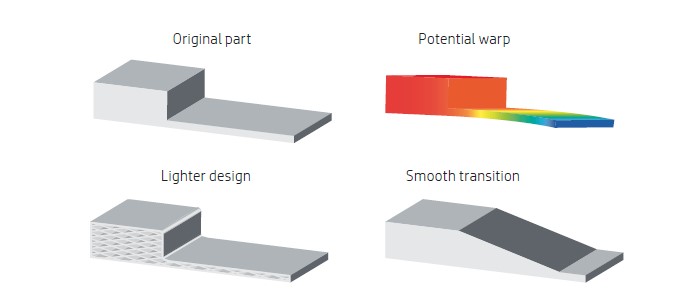How to design thin and long parts?
Prevent Warping in Thin and Long 3D Printed Parts
Thin and long parts are more likely to cool unevenly, which can cause the printed part to shrink unevenly, resulting in a distortion in one direction that is different from the nominal shape.
As a general rule, any part with an aspect ratio (length vs. width) greater than 10:1 or any part with a sudden change in its cross-section or a mostly long and thin curved segment is likely to warp, as shown in the picture below:
When designing the part, there are a few things you should keep in mind to lower the chance of this deformation happening:
• Make long walls thicker to make their aspect ratios smaller.
• Don't put ridges and ribs on big, flat areas.
• Change the design of parts that are likely to experience a lot of stress and make the transitions between their cross-sections smoother.
• Make the parts lighter by hollowing them out or adding internal lattices.
Summary:
- Abrupt cross-section changes
- Thin, long, curved segments
- Aspect ratio > 10:1 (length:width)
🛠️ Mitigation: Thicken long walls or hollow the part with lattice fill.

